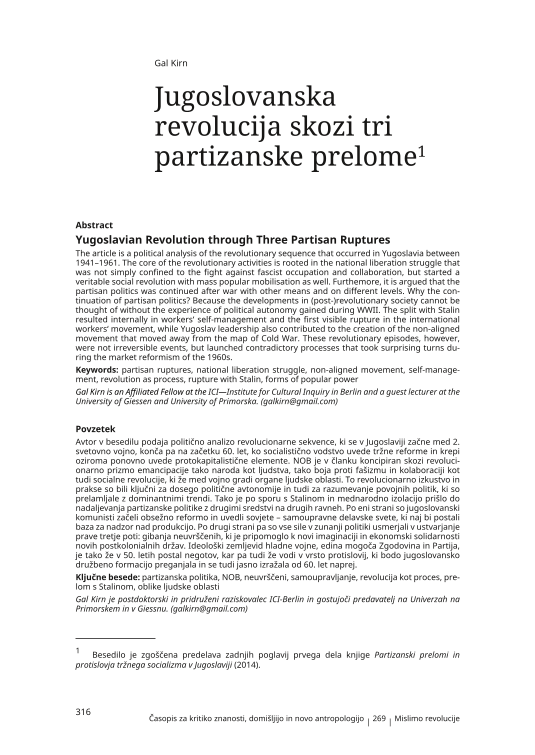The article is a political analysis of the revolutionary sequence that occurred in Yugoslavia between 1941–1961. The core of the revolutionary activities is rooted in the national liberation struggle that was not simply confined to the fight against fascist occupation and collaboration, but started a veritable social revolution with mass popular mobilisation as well. Furthemore, it is argued that the partisan politics was continued after war with other means and on different levels. Why the continuation of partisan politics? Because the developments in (post-)revolutionary society cannot be thought of without the experience of political autonomy gained during WWII. The split with Stalin resulted internally in workers‘ self-management and the first visible rupture in the international workers‘ movement, while Yugoslav leadership also contributed to the creation of the non-aligned movement that moved away from the map of Cold War. These revolutionary episodes, however, were not irreversible events, but launched contradictory processes that took surprising turns during the market reformism of the 1960s.




